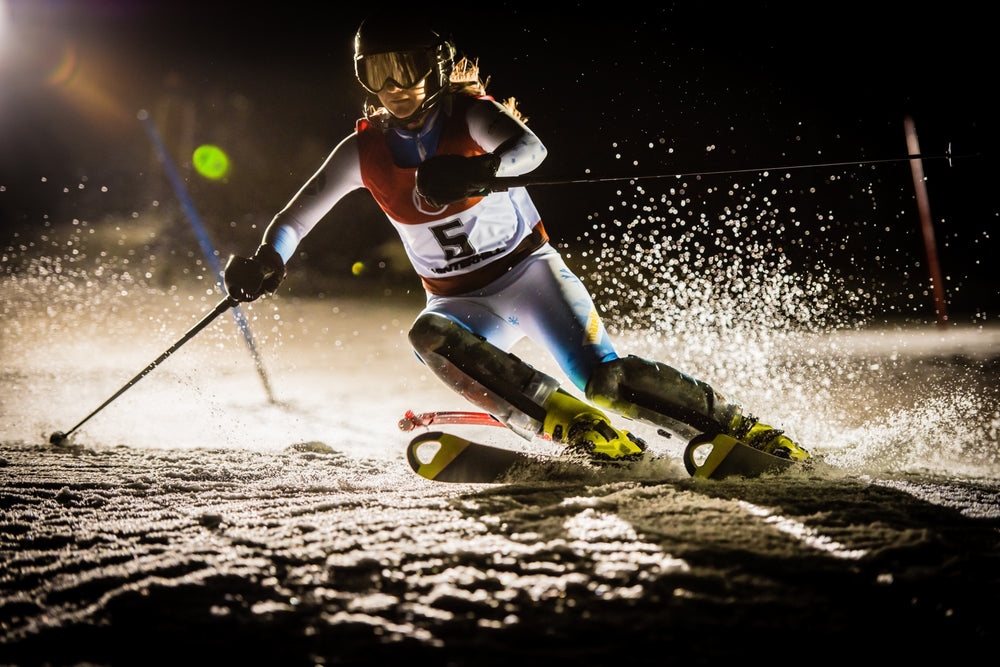Balance board training plays a significant role in preventing injuries on the slopes for skiers and snowboarders. Skiing and snowboarding are physically demanding activities that place stress on various muscle groups, joints, and ligaments. Balance board training helps improve your strength, stability, coordination, and proprioception, all of which are essential for injury prevention. Here's how balance board training can contribute to safer winter sports experiences:
- Enhanced Balance and Stability: Balance board exercises challenge your ability to maintain equilibrium on an unstable surface, closely simulating the dynamic conditions of skiing or snowboarding.
- Improved balance and stability reduce the likelihood of falls, especially during tricky maneuvers or while navigating uneven terrain. Enhanced stability also helps skiers and snowboarders maintain better control, reducing the risk of collisions with obstacles or other riders.
- Strengthening Core and Leg Muscles: Balance board training engages your core muscles, which include your abdominals, obliques, and lower back. A strong core provides better support to your spine and reduces the risk of back injuries.
- The exercises also target leg muscles, including quadriceps, hamstrings, and calf muscles. Strong leg muscles can absorb shock and impact more effectively, reducing strain on the joints and decreasing the risk of lower limb injuries.
- Improved Proprioception: Proprioception is your body's ability to sense its position in space. Balance board training enhances proprioception by requiring you to make constant micro-adjustments to maintain your balance.
- Enhanced proprioception helps you react more swiftly to changes in terrain, making it easier to adapt to sudden bumps, icy patches, or unexpected obstacles.
- Better Joint Stability: Balance board exercises strengthen the stabilizing muscles around joints, particularly the knees and ankles. Strong joint stabilizers provide additional support and help reduce the risk of common skiing and snowboarding injuries, such as sprains, strains, and ligament tears.
- Injury Resilience: Regular balance board training can enhance your overall resilience to injuries. It teaches your body how to recover from minor imbalances and wobbles, potentially preventing falls that could lead to more severe injuries. As you gain confidence and become more skilled at maintaining balance, you're less likely to be thrown off balance by challenging conditions.
- Better Agility and Coordination: Balance board exercises improve your agility and coordination, allowing you to make precise movements and quick adjustments. These skills are invaluable for navigating steep slopes, tight turns, and crowded areas on the mountain while reducing the risk of accidents due to uncontrolled movements.
- Core Activation for Falls: In the event of a fall, a strong core can help protect your spine and prevent serious injuries. Balance board training prepares your core muscles to engage and absorb impact forces during a fall, potentially reducing the severity of injuries.
- Mental Focus and Composure: Balance board training requires concentration and mental focus to maintain stability. This mental discipline can translate to better decision-making and composure on the slopes. When your mind is trained to stay calm and focused under challenging conditions, you're less likely to panic or make rash decisions that could lead to accidents.
- Injury Prevention for All Skill Levels: Balance board training is suitable for individuals of all skill levels, from beginners to advanced skiers and snowboarders. It can benefit novices by helping them build a solid foundation of balance and stability and provide advanced riders with a platform for fine-tuning their skills and avoiding complacency.
- Pre-Season Conditioning: Incorporating balance board training into your pre-season conditioning routine allows you to build the necessary strength and skills before hitting the slopes. This preparation reduces the risk of early-season injuries and muscle soreness, ensuring that you start your winter sports season in better shape. To maximize the injury prevention benefits of balance board training:
Consistency is Key: Integrate balance board exercises into your regular training regimen. Aim for several sessions per week to maintain and enhance your skills.
Gradual Progression: Begin with basic exercises and gradually increase the difficulty level as you become more proficient. This gradual approach minimizes the risk of injury during training.
Comprehensive Training: Combine balance board training with other forms of physical conditioning, including strength training, cardiovascular fitness, and flexibility exercises, to create a well-rounded fitness program.
Sport-Specific Drills: Design balance board drills that mimic the movements and demands of skiing or snowboarding. This helps you develop skills that directly apply to your chosen winter sport.
Professional Guidance: Consider working with a coach or trainer experienced in balance board training to ensure you're performing exercises correctly and effectively.
Safety Precautions: Always prioritize safety when using a balance board. Use it on a stable surface, warm up properly, and avoid overexertion or pushing yourself too hard.
Regular Self-Assessment: Continually assess your balance, stability, and overall performance on the board. Identify areas where you need improvement and tailor your training accordingly.
In conclusion, balance board training is a valuable tool for preventing injuries on the slopes. It enhances balance, stability, proprioception, strength, and coordination while improving mental focus and resilience. By incorporating balance board exercises into your training routine and following safety guidelines, you can significantly reduce the risk of skiing and snowboarding injuries and enjoy safer and more enjoyable winter sports experiences.

